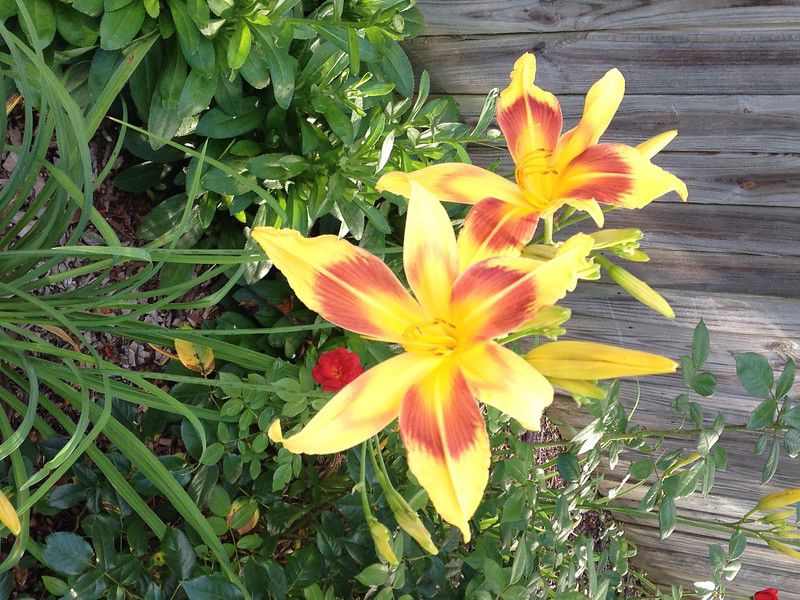Stem cuttings are very popular for vegetative propagation
Published 9:09 pm Wednesday, June 28, 2017

- COURTESY Plants that propagate by division include this daylily "Lady Neva."
Plant propagation simply refers to the reproduction of plants, and occurs by seeds or vegetative means such as cuttings (leaf, stem or root), division, layering, grafting, budding and tissue cultures.
You cannot propagate by vegetative means any plants that are patented or have a patent pending. However, patented and patent-pending plants can be started from the seeds that you collect from them.
Vegetative propagation of plants is cloning. Some methods of vegetative propagation are easier than others, and some plants are easier to propagate than others. Grafting, budding and tissue cultures are more difficult for the home gardener and are not recommended for beginners.
Using a cutting (whether leaf, stem or root) is the most popular method of vegetative propagation for the majority of shrubs, perennials, herbs and succulents. Common shrubs that are easy to propagate from stem cuttings are coton easter, ivy, hibiscus, hydrangea, ligustrum and wisteria. Perennial plants that are easy to propagate from stem cuttings are dianthus, salvia, coleus and verbena. Herbs that are easy to propagate from stem cuttings are bay laurel, bee balm, lavender, lemon balm, Mexican oregano, rosemary and sage. Sedum and Christmas cactus are succulents that are easy to propagate from stem cuttings. The easiest plants to propagate from leaf cuttings are African violets, begonias and a wide variety of succulents and cacti.
Another easy method is division, whereby the parent plant is separated into sections. Plants that are easily propagated by division are bulbous plants such as amaryllises, irises, lilies, daffodils and tulips. Others include ornamental grasses, rhizomatous irises, hostas, ajugas, primroses, geraniums, bamboos, elephant’s ears and daylilies.
Layering also is easy. It is like rooting cuttings that are still attached to the parent plant and protected by it. Plants that are easiest to layer are those that have shoots that trail along the ground or climb. Easy ones to propagate by layering are bougainvillea, cotoneaster, hydrangea, ivy, jasmine, honeysuckle, passionflower, azaleas and rhododendrons, strawberries, viburnum and wisteria.
Stem cuttings have become the most popular method of vegetative propagation for the majority of shrubs, perennials, herbs and succulents. In less than six months you could end up with an adult plant that is exactly like its parent in every way. The following describes how to propagate a lavender stem cutting. This method can be applied to other plants.
– Choose a healthy young shoot, 2 to 4 inches long.
– Trim leaves from the lower half of the stem.
– Dip into rooting hormone if you have any.
– Choose a fine potting compost mixed with sharp sand or perlite.
– Up to five shoots can be used in one pot.
– Water from below.
– Pierce a bag and cover pot to hold in moisture.
– Shoots can be transplanted when roots appear.
If you would like more information go to http://aggie-horticulture.tamu.edu and search for articles on propagation.






